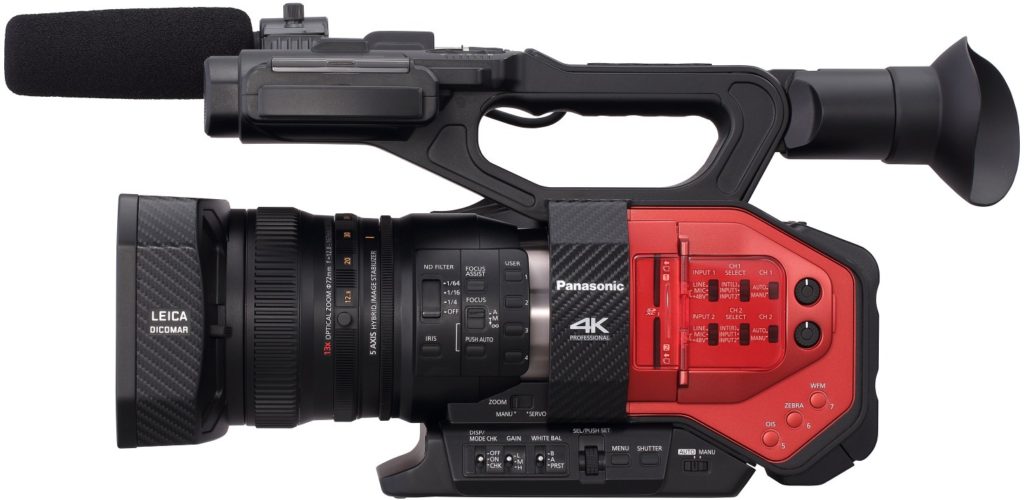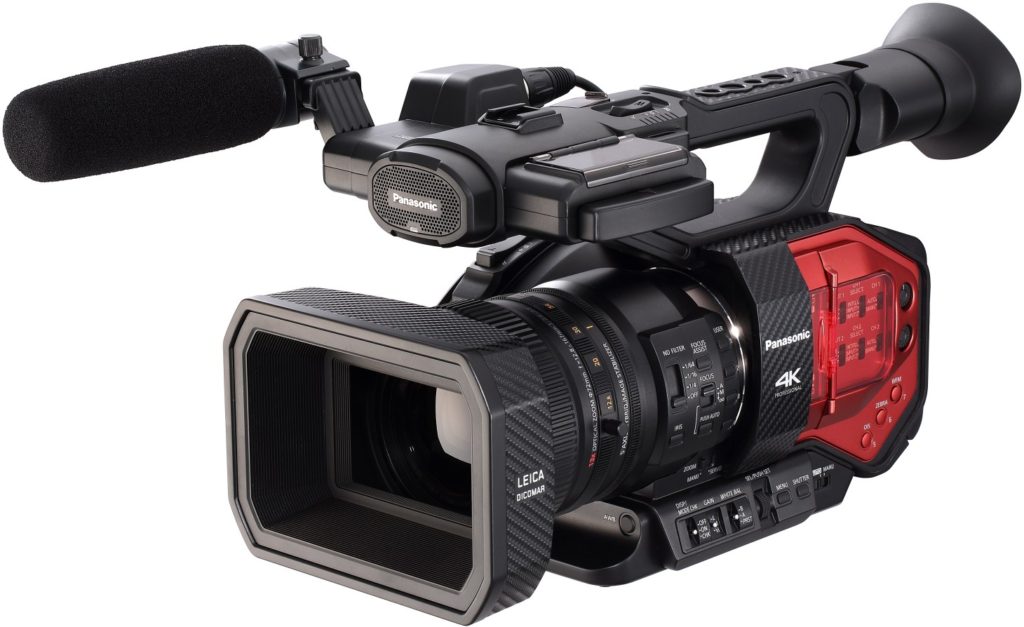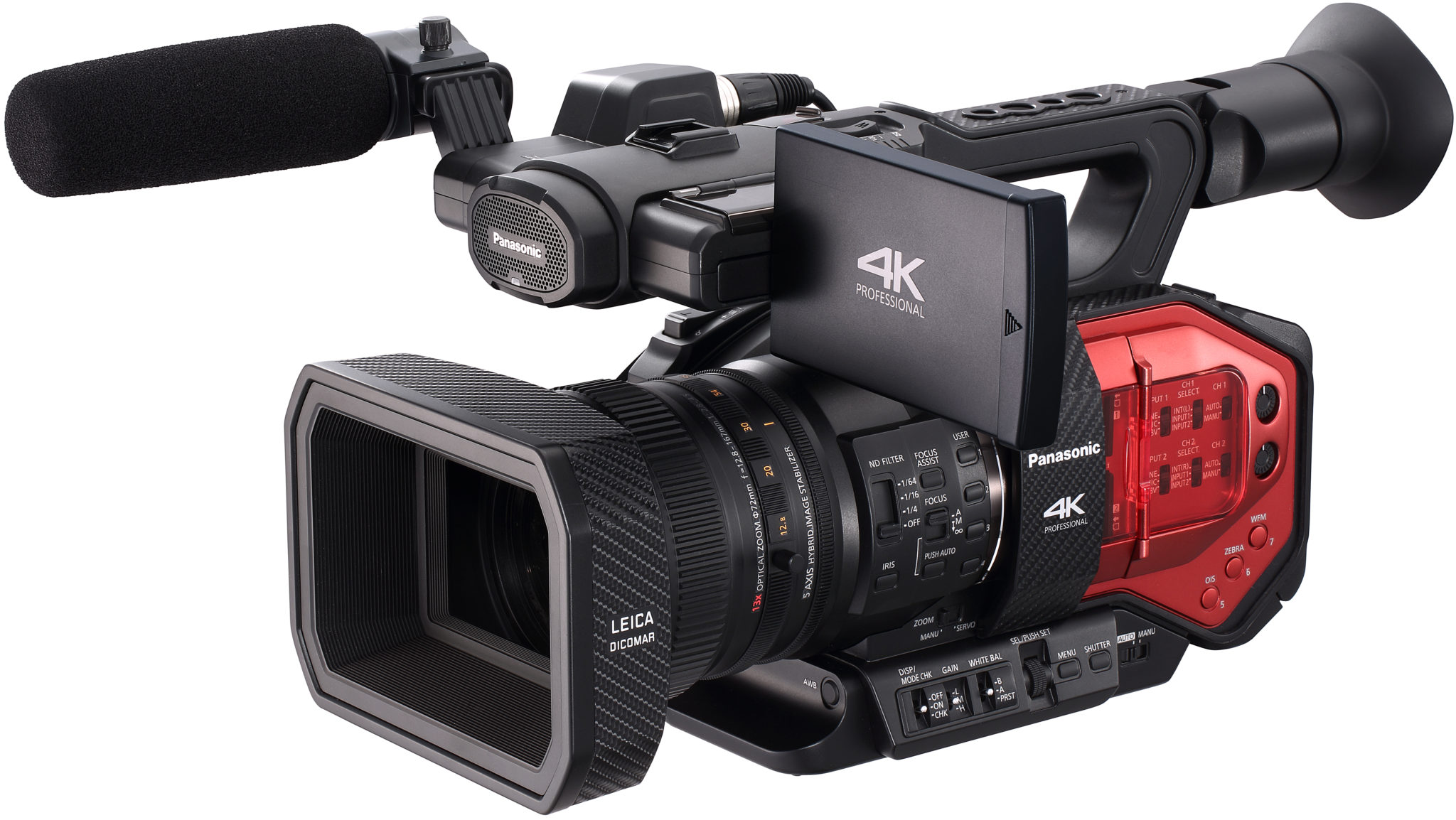I have all but pulled the trigger on my next camera: the Panasonic AG-DVX200 (brochure, Panasonic Pro-AV website, Panasonic Business website). It took quite a bit of research and bumbling about to make my decision as I had been looking for a handy-cam-style camcorder to shoot the type of projects that make up the majority of my freelance work: reality, documentary and event. From my first impressions of another camera, the new Sony PXW-Z150, I had steeled myself against considering cameras above $3,500.
However, the next higher class of camera simply did more things that I would get more mileage out of in the long run. Since I see each camera as a major investment that will last 5-8 years, I became more comfortable with needing to spending that extra ~$1,000 or so for the quality, professional features and ease-of-use I was looking for. I still like the X70, still like the specs of the Z150. But the DVX200 has a logarithmic profile, intra-frame codecs, DCI 4K, a larger sensor and that lovely Panasonic color matrix (made nicer by a recent free firmware patch). It also has a lot of support from both Panasonic and third-parties and, unlike Sony, Canon and others, Panasonic seems to officially support its cameras for a number of years instead of with just one quick patch to fix a few typos and then on to the next minimally-revised version.
There’s something very appealing about a camera being able to shoot real DCI 4K in true 24 fps with an intra-frame codec and logarithmic profile.
There’s something very appealing about a camera being able to shoot real DCI 4K (Digital Cinema Initiative 4K, 4096×2160, 17:9 aspect ratio) in true 24 fps (frames per second) at 4:2:0 8-bit at 100 Mbps (Mega bits per second) in V-Log L (Varicam Logarithmic profile Lite). And to shoot UHD (Ultra-High Definition, 3840×2160, 16:9 aspect ratio) for FHD (1920×1080, Full-raster High Definition, 16:9) and effectively recording 4:4:4 10-bit at 200 Mbps and having the option to also reframe on the timeline, acquired with cheap SDXC cards on inexpensive batteries that will go for many hours, plus FHD 120 fps — everything just seemed to fall into place on paper for me.
I don’t love that the affixed Leica lens is not 100% mechanical and therefore imprecise. The zoom ring has a mechanical link and can be either servo-controlled or manually racked, but the other two rings are strictly fly-by-wire. Focus, in particular, is said to have a mind of its own (read: Fine Control issues). User-reported issues seem to stem from inexperience with a new camera compounded by users not customizing settings in the menus, however, so I’m not exactly worried, but my ENG and motion picture camera operator backgrounds would have preferred total mechanical FIZ control. This does mean there are no focus ring hard stops potentially making repeatable, mark-able focus pulls very difficult at the extremes. But, if you don’t pull past the extremes, I am assured the ring and it’s relative position with the focal plane are said to be precise and, therefore, repeatable in Course and Fine control modes.
An additional caveat is the Leica is not a true optical parfocal lens; zooming too quickly will reveal the lens’ element groups rushing to catch up. This means on a snap zoom the image will be briefly out of focus from one extreme to the other. Not a big deal with inherent motion blur, but at the extremes, once the zoom has ended you’ll notice the shot eventually return to proper focus as the internal lens elements settle. That seems silly with a mechanical zoom that can snap.

Regardless, I believe that the DVX200 is the best camcorder for me. Reading Barry Green’s ebook gets me excited about all the customization functions, alone. And it’s in stock right now pretty much everywhere. I’m just waiting for a few things: 1. a few freelance checks to clear, 2. I’d still like to see what gets announced at NAB Show next week, just in case.
But, even if a fantastic camera is announced that may or may not begin shipping later this year or whenever, I still think purchasing the DVX200 next month is the best thing for me. It gets me the kind of camera I desperately need for the majority of my freelance work, which saves me the hassle of using the Blackmagic Cinema Camera on shows that aren’t on controlled sets.
My freelance work, unless it is a commercial, music video or movie, rarely grants me the luxury of being able to change lenses, to carry a bunch of lenses, extra gear and crew to make it all work. Mostly I am a one-man-crew and I really only have so much ability as my own pack mule to carry all the gear I need to properly utilize the Cinema Camera. Don’t get me wrong: the image is eventually worth it, but the stress is killer and if I don’t have to do that 80% of the time, then that would make my back and shoulders feel a lot better. Not to mention the time saved just setting the tripod down, white balancing, composing the shot and hitting record. It takes me back to my ENG days where I could shoot an entire commercial in less than 3 hours.
I’m highly looking forward to being able to be more productive with less bags of equipment and instead having a single bag with everything I need. I imagine my Rodelink receiver will live on the DVX200’s cold shoe after next month! So, next month, I expect to start compiling information on my new camera as I take it out into the world. I plan to do a review of the DVX200 once I’ve used it for a while to share my thoughts of real-world use by myself, a freelance videographer and one-man-crew, as well as my thoughts of using it as a cinematographer on a proper short film.

The number of projects I’ve already had this year that I could have used the DVX200 on…all of them, actually. I haven’t done one project this year already that I couldn’t have used this camera on and, in doing so, saved myself quite a bit of headache from using the Cinema Camera or the Canon 6D or 5Dm3 in reality situations that they just weren’t designed for. And DSLR’s suck at real video and I’ve been tired of that form factor for videography for a number of years. I did not purchase my 6D to shoot video, but that’s what I’ve been using it for because I haven’t had a camcorder to take over from the BMCC. The 6D is easier to use and much less heavy than the BMCC, but at a cost of a less-than-stellar image. The DVX200 gives me the best of the DSLR, the best of the BMCC (except raw), and the best of the handy-cam-style camcorders all rolled into one, single unit.
I’ve always been a fan of Panasonic’s skin tones, and I was a heavy user of the HPX200A and did use the DVX100B on a few projects. The DVX200 seems like a perfect fit for me. I think it’s going to be wonderful.
In the meantime, some educational DVX200 videos on YouTube: Review by Hot Rod Camera, “A Day of Life” short film by Panasonic, “A Day of Life” BTS, DVX200 Key Features, DVX200 Demo with Bernie Mitchell.
Update, May 1, 2016: I travelled up to Dallas after a work trip last week and visited a Panasonic reseller which demoed the DVX200 for me. Finally holding the camera in my hands laid to rest any doubts or issues I may have had prior to physically handling it. Now it’s not just a white paper and some pictures, but a real product I feel more confident investing it. Review coming soon.
Update, May 6, 2016: By the end of the day, both FedEx and UPS will be delivering packages: the DVX200, plus batteries, cards and a few other things. Camera bag arrives next Tuesday. I’ve loved the camera so far, this weekend will be time to go out and test it the best way I know how: using it in the field. Review coming soon.

